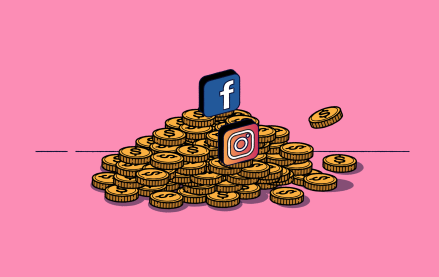Connect with execs from The New York Times, TIME, Dotdash Meredith and many more
Amazon will send small vendors to its third-party marketplace, marking a shift in strategy
Two months after purchase order turbulence, thousands of Amazon vendors could be back on the chopping block.
To catch you up:
- In early March, Amazon paused tens of thousands of weekly purchase orders from small vendors with no notice. The vendors in question typically fell under $10 million in annual sales, and many of them also sold bulky, expensive to ship goods.
- In follow-ups, Amazon responded to some vendors that the decision was permanent, as the company decided these vendors would perform better on the third-party marketplace.
- Five days following the initial order pull, Amazon reinstated the vendor accounts, with a notice: Within 60 days, all vendors must register in Amazon’s Brand Registry (which requires a trademark filing), or shift business over to the third-party marketplace.
Now, another reckoning could be coming for small vendors. Bloomberg reported Tuesday that according to people familiar with the strategy, Amazon is planning a “large scale reduction” of vendors on its first-party marketplace in order to reallocate resources to more profitable brands and cut costs of operating its wholesale business. It’s a move that would shift the bulk of small vendors to the third-party marketplace, where sellers operate their own businesses and pay to access features like enriched analytics and Prime shipping.
An Amazon spokesperson declined that such a reduction was coming, and Amazon’s svp of operations Dave Clark tweeted on Tuesday that Amazon was not planning a drastic shift in its vendor relationships. The spokesperson wrote in an email: “We review our selling partner relationships on an individual basis as part of our normal course of business and any speculation of a large scale reduction of vendors is incorrect. Like any business, we make changes when we see an opportunity to provide customers with improved selection, value and convenience, and we do this thoughtfully and considerately on a case-by-case basis.”
Regardless of how Amazon defines a large scale reduction, there’s evidence that the company has been reorienting how it deals with its massive volume of brands and sellers. It’s apparent in the push to have vendors registered as trademarked brand owners, and funneling non-registered sellers to the third-party marketplace. And, according to Amazon consultants, brands have reported hearing indications from their Amazon vendor managers that the forthcoming roadmap would include a shift from first-party to third-party selling. Other brands have reported a reduction in weekly purchase order volume, a signal that they should start setting up a third-party selling strategy.
It’s going to take work for first-party vendors to transition to the third-party marketplace, including putting together a direct-selling strategy, and it will likely result in some lost sales. Amazon’s retail business is a massive operation to steer — in 2018, total third-party sales grew 52% to $160 billion, while first-party sales grew 25%, to $117 billion — but it’s clear the retailer is not planning on pulling the plug on thousands of vendors all at once. This approach is more gradual and it’s a fluid shift that could take months, if not years, to complete. As long as vendors have a strategy in place, said Orca Pacific CEO John Ghiorso, it’s a move that will pay off for vendors in the long run.
“In most cases, for these smaller, sub-$10 million vendors, Seller Central is a better environment for them. They have more control over products and pricing. That’s a pretty significant silver lining to this,” said Ghiorso. “Amazon believes these brands are ultimately better off in the Seller Central business, and when the brand wins and can do more on the platform, the brand accelerates their business, meaning they also accelerate Amazon’s business. in a more cost-effective way. It’s a win for everyone, but in the short term, it’s going to be a rocky transition.” — Hilary Milnes
3 questions with Morgan Hirsh, founder & CEO, Public Goods
Morgan Hirsh launched Public Goods, an online marketplace for household products, in 2017, as a way to rebundle the disintermediated shopping experience that had been led by DTC brands in the grooming and wellness categories. With $6 million in funding, Public Goods was built with a product-first mindset, and has expanded to categories like packaged foods and personal care. Hirsh discussed his marketplace’s approach to the DTC category.
Where did you see an opportunity for an online marketplace like Public Goods?
I thought it was time for a CPG company to be built with today’s values — healthy, high quality, but accessible. We decided to build a one-stop shop for what people really need, united around the idea of health, simplicity and affordability. But we realized, despite how many of these direct brands that have launched, it’s actually pretty challenging for the economics to work for a single-product brand, long term. It was something that made sense in the period of time when ads were cheap and there was a low barrier to entry. Even if a company stands for and sells the right thing, over time, they have to charge more money for their products and the economics of the business stop working. So if you want to build an accessible brand, it’s impossible to do it in a single category.
Other brands have won customers over with one product before expanding out. How did you decide to launch with a marketplace?
We didn’t want a hero product. I don’t see a future where people are going to a different website for razors, tampons, dog food and vitamins. You can get some brand loyalty in those businesses, but it’s an unnatural unbundling of the shopping experience and an inefficient way to shop. Plus a lot of the founders you see have finance or marketing backgrounds on these teams. I came from it from an opposite place: I worked in production and manufacturing, so we were working with high standard manufacturing partners. It was easy to expand more quickly, meaning our customers spend more money, so we have better lifetime value without spending too much on acquisition.
How do you make enough noise in the market without a ton of venture capital?
There are entrepreneurs out there who manage to raise money on a story, but the companies that over-capitalize are not necessarily successful. Fundraising and success are two different things. We’ve been growing fast without much funding because we’re mindful of CAC, lead times, vendor terms and expansion limits. We think about the business fundamentals so that it’s not a company that’s going to be forever reliant on outside capital. We make our money back almost immediately on marketing spend. If you spend $200 to get a customer and think, ‘That’s OK, I’m going to bet that I’ll get that back,’ — that’s not the way we run a business. We don’t want to require venture capital. And a lot of these companies, they also don’t have great retention. I don’t think you can buy customer love. It’s something that has to be earned. — Hilary Milnes
Sweetgreen’s DTC marketing playbook
Salad chain Sweetgreen’s journey is similar to that of a lot of many other high-profile DTC brands. It’s taken a tech-driven approach to disrupting its category, has taken on hundreds of millions in venture capital funding, is now worth more than $1 billion. Now, much like the cohort of online-born and Instagram-fueled consumer brands, the company is looking to diversify its marketing mix. This week, Sweetgreen is launching its first national advertising campaign across a range of channels.
The campaign, called “Follow Your Greens,” will feature both print and video ads that will run on social, YouTube, OOH, OTT, display, native, audio, search and direct partner platforms. Created and produced by Sweetgreen’s 10-person in-house agency, the ads will show people telling the camera their go-to-Sweetgreen order.
According to a Sweetgreen spokeswoman, the company is running the campaign now to “increase awareness of the brand as we continue to expand our restaurants to new and existing markets.” The company will run brand lift studies to measure the effectiveness of the campaign, and will look at entry point and attribution with select partners to understand which platforms are most effective in driving new customer. In addition to this new campaign, the spokeswoman also said that Sweetgreen is most focused on testing podcasts, and video within the OTT and CTV space right now. — Anna Hensel
What we’ve covered
VC Henry McNamara is tired of the DTC playbook. And thinks the term itself is outdated.
Home Depot and Lowe’s are competing over the pros. Both home improvement retailers are building out their B2B businesses.
Checkout loans are gaining traction among customers, a lesson Everlane learned when it pulled Afterpay from its site.
Subscribe to the Digiday Retail Briefing: An email with news, quotes and stats covering the modernization of retail and e-commerce, delivered three times per week.
More in Marketing

Generative AI sparks brand safety concerns marketers know all too well
Despite concerns around brand misuse and IP, most marketers are sticking to traditional strategies.

‘Production is a big topic right now’: With AI moving beyond media, Publicis turns toward creative
The holdco is positioning AI as core infrastructure for ad production not just media buys.

Instagram offers a new guide to advertisers to convince them to try out its creator marketplace
The 26-page document aims to make the whole process quick and painless.





